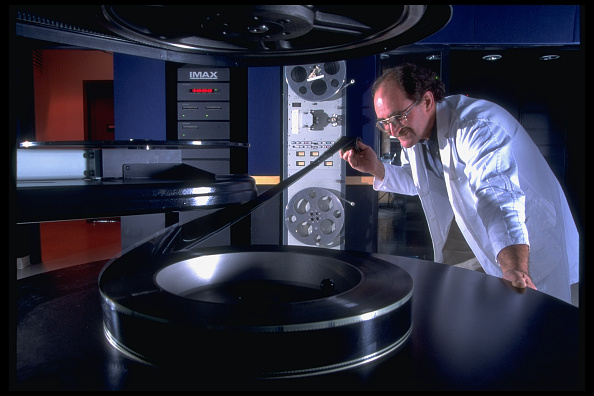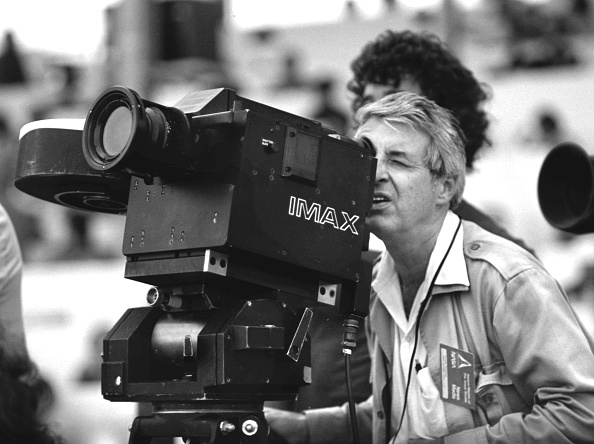Feel like a movie? If you’re looking for that big cinema look and feel, nothing can come close to IMAX.
The Canadian-made technology that showed us the world as we’d never seen it before and became a staple of big budget Hollywood films from its offices here in Mississauga.
The inception of IMAX film technology in the 1960s by a trio of Canadian filmmakers marked a revolutionary leap forward for movies.
Graeme Ferguson, Roman Kroitor, and Robert Kerr were documentarians who wanted to overcome the limitations of conventional cinema screens and immerse audiences in the majesty and awe of the world they loved to explore.
In preparation for Expo 67 in Montreal, the National Film Board (NFB) commissioned Graeme Ferguson and Roman Kroitor two of its documentarians to create experimental films that showed off Canada and Canadian innovation to the world in big way.
Ferguson created the 18-minute Polar Life, an experimental film experience about the Arctic and Antartica, with audience members seated on a rotating stage, surrounded by eleven fixed screens. Viewers experienced three screens at once, with a full rotation taking 28 minutes.
Kroitor’s presented In the Labyrinth, a modern interpretation of the Minotaur of Greek myth, playing out on six massive screens measuring 11.5 metres high and six metres wide, using both 35 mm and a newer, larger 70 mm film.

An IMAX technician working with film, showcasing the company’s leading role in the film industry’s industrial transformation in the 1990s via IMAX’s large-screen film technology. (Photo by Steve Liss/Getty Images)
Invited to create something similar for Expo ‘70 in Osaka, Japan, Ferguson and Kroitor left the NFB and created a new company, IMAX, an abbreviation for “Image Maximum,” along with Ferguson’s childhood friend and businessman Robert Kerr.
IMAX utilized the 70mm film format, Kroitor and Ferguson ran it through the projector horizontally, allowing for a much larger frame size.
Audiences were wowed by what they saw in front of them.
IMAX provided an unprecedented level of image resolution and clarity, and the creation of massive screens allowed filmmakers to wrap audiences in the experience.

IMAX co-founder and filmmaker Graeme Ferguson films the launch of the Space Shuttle Columbia at Kennedy Space Center in Florida on November 12, 1981 using the large-format IMAX camera . (Photo by Robert Alexander/Getty Images)
Initially, the company focused on documentaries and educational content.
Toronto’s Ontario Place was an early adopter, building its now iconic white dome specifically for IMAX films, such as the 18-minute North of Superior, directed by Ferguson to open Ontario Place in 1971.
The film was 18 minutes long because that was the maximum length of the original IMAX reels.
We’ve come a long way since then.
In 1991, the Rolling Stones: Live at the Max was the first feature length film shot entirely in IMAX during the band’s Urban Jungle Tour. The film was shot on IMAX 70 mm film, flown to New York for processing and then screened at Ontario Place’s IMAX theatre to test the finished product in time for its world premiere at the California Museum of Science and Industry in Los Angeles.
Disney’s animated Fantasia 2000 was the first major Hollywood motion picture to be released in IMAX, playing in 75 theatres worldwide.
In 2002 IMAX developed its Digital Remastering (DMR) process in 2002. The technology enhances the image and sound quality of regular movies, allowing them to be converted from standard film formats into IMAX films, providing viewers with a more immersive cinematic experience.
IMAX continued to focus mainly on documentaries…and then Christopher Nolan came calling.
Nolan had fallen in love with the technology as a kid, growing up in Chicago and going to watch those early science and nature IMAX docs at Chicago’s Museum of Science.
Following the success of 2005’s Batman Begins to Nolan wanting a sequel.
Nolan agreed – and told Warner Brothers he wanted to about 20 per cent of the finished movie to be filmed in IMAX.
The studio balked.
IMAX film processing cost almost four times more than regular 35 mm film and the cameras were large and unwieldly for moving around Chicago, Liverpool, Glasgow and London, where the movie was shot.
Nolan was unmoved. If they can get those cameras to the top of Mount Everest, Nolan figured he and his crew could get them to work on the streets of Chicago.
Warner Brothers relented and in January 2007 cinematographer Wally Pfister and his crew began training with IMAX.
The Dark Knight came out in 2008 to rapturous praise and some still consider it the best comic-book adaptation of all time.
It also showcased the technology’s potential to enhance narrative storytelling.

Mississauga’s Simu Liu posed with fans at the world premiere of “Shang-Chi and the Legend of the Ten Rings” at El Capitan Theatre on August 16, 2021 in Los Angeles, California. Shang-Chi and other Marvel films have made IMAX a regular part of big budget blockbusters. (Photo by Alberto E. Rodriguez/Getty Images for Disney)
This integration of IMAX technology into high-profile feature films marked a pivotal moment, as it demonstrated the commercial viability and audience demand for high-quality, immersive cinematic experiences.
IMAX’s impact on the filmmaking industry extends beyond the enhancement of visual and auditory experiences.
It has also influenced the production process, encouraging filmmakers to consider the immersive potential of the films the make.
Following the success of The Dark Knight, IMAX became the go-to film technology for summer blockbusters and big-budget series.
Avengers Infinity War became the first Hollywood live-action film to be shot entirely in IMAX in 2018, setting the new standard for almost all the Marvel films to follow.
Mississauga-raised Simu Liu made his IMAX debut in 2021 in Shang-Chi and the Legend of the Ten Rings.
From its Mississauga headquarters, IMAX has transformed the movie-going experience for all of us.
